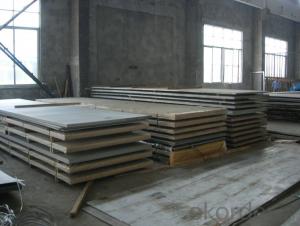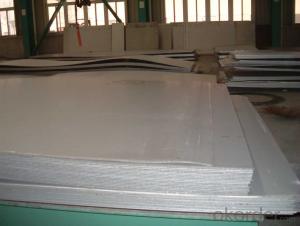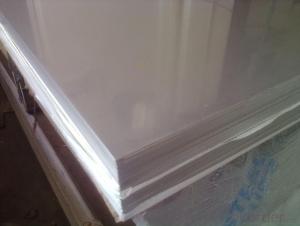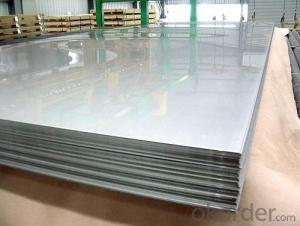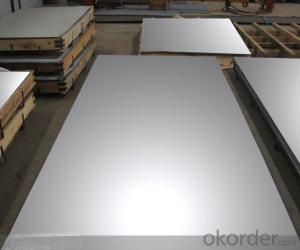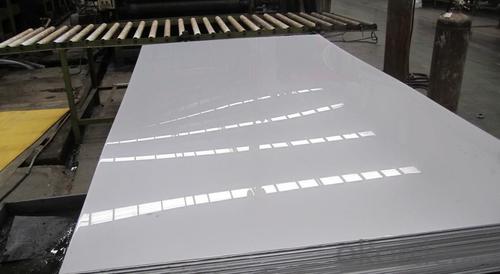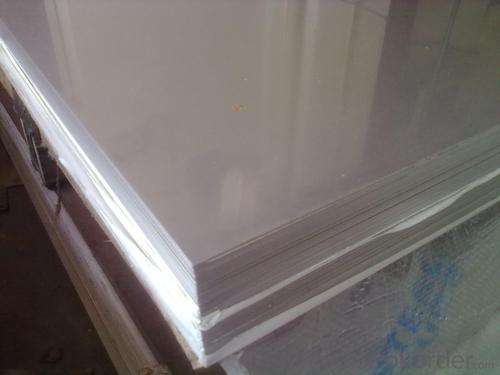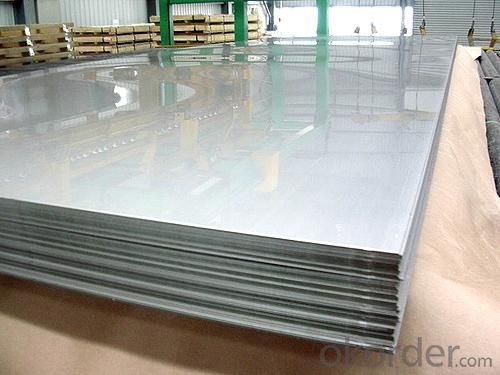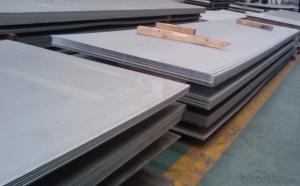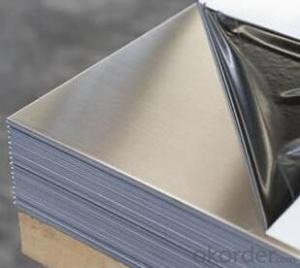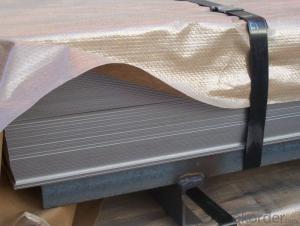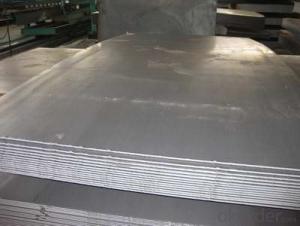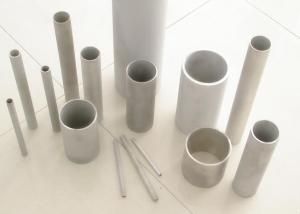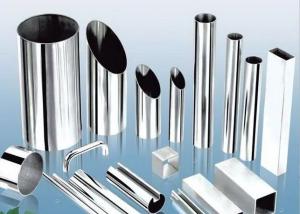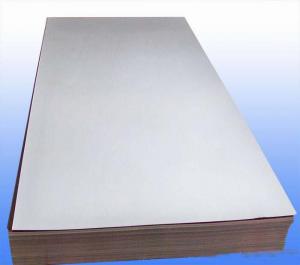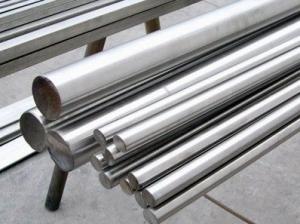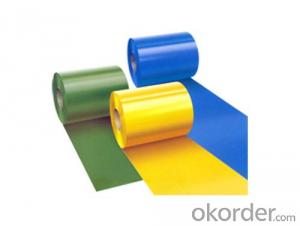Stainless Steel Plate 304 with Surface Treatment
- Loading Port:
- Shanghai
- Payment Terms:
- TT OR LC
- Min Order Qty:
- 1000 m.t.
- Supply Capability:
- 5000000 m.t./month
OKorder Service Pledge
OKorder Financial Service
You Might Also Like
Product Description
Stainless Steel Plate 304 with Surface Treatment
Description of Stainless Steel Sheet:
Description | steel sheet,hot rolled steel sheet,cold rolled steel sheet, steel sheet,sheet,steel plate |
Material |
201/202,304/304L, 310S/309S/316L/316Ti/321,410/420/430/444/443/409L, and 904L
|
Standard | ASME, ASTM, EN ,BS,GB,DIN, JIS etc |
Application | Steel sheet applies to construction field, ships building industry, petroleum & chemical industries, war and electricity industries, food processing and medical industry, boiler heat exchanger, machinery and hardware fields. |
Packaging | Standard export sea-worthy packing |
Delivery time | 10-30 days |
Quality | No.1 |
Productivity | 500 tons/Day |
Note | Our company has cooperative relation between the domestic agents. Stainless steel sheet can be made accordingto the customers requirements. Fasten delivery. Quality assured. |
Contacts | If you have any question,please feel free contact me. |
Stainless steel sheet surface finish characteristics
Surface finish | Characteristics and application |
2B | The surface brightness and flatness of no2B is better than no2D. then through a special surface treatment to improve its mechanical properties,No2B could nearly satisfy comprehensive uses. |
No.1 | Polished with abrasive belt of grit#100-#200, have better brightness with discontinuous coarse stria, used as inner and external ornaments for building, electrical appliances and kitchen utensils etc. |
No.4 | Polished with abrasive belt of grit #150-#180,have better brightness with discontinuous coarse stria, but thinner than No3, are used as bathtub buildings inner and external ornaments electrical appliances kitchen utensils and food processing equipment etc. |
HL | Polished with abrasive belt of grit #150-#320 on the NO.4 finish and has continuous streaks, mainly used as buildings ornaments elevators, door of building, frontal plate etc. |
BA | Cold rolled, bright annealed and skin-passed, the product have excellent brightness and good reflexivity like mirror, kitchen apparatus, ornament etc. |
8K | The product have excellent brightness and prefer reflexivity can to be the mirror. |
Main Features of stainless steel sheet :
•Escalator, Elevator, Doors
•Furniture
•Production tools, Kitchen appliances, freezers, cold rooms
•Auto Parts
•Machinery and Packaging
•Equipment and Medical devices
•Transport system
Product Details:
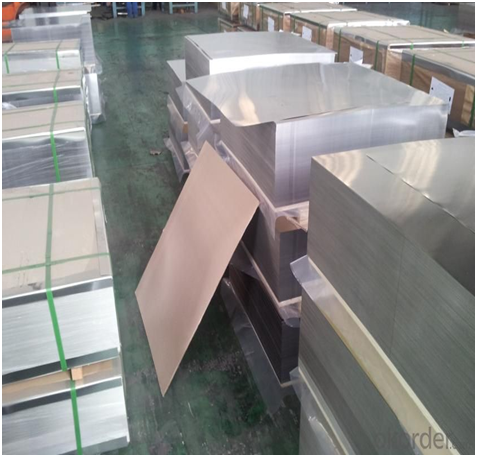
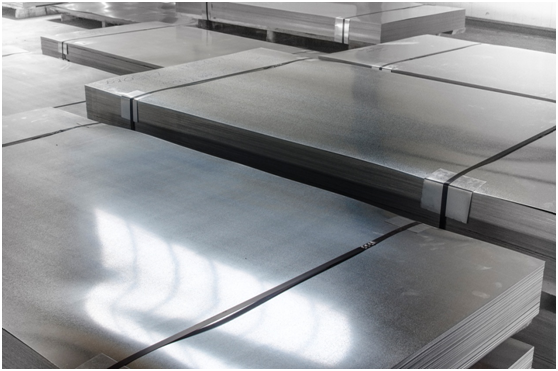
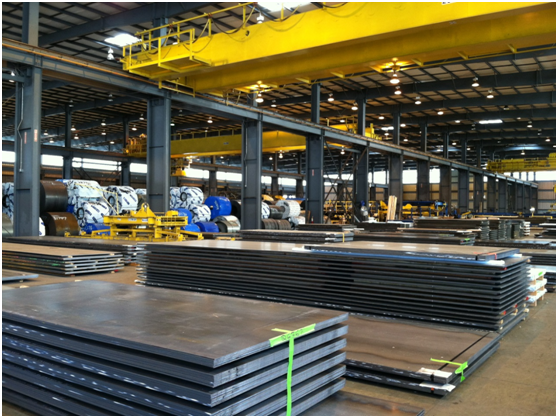
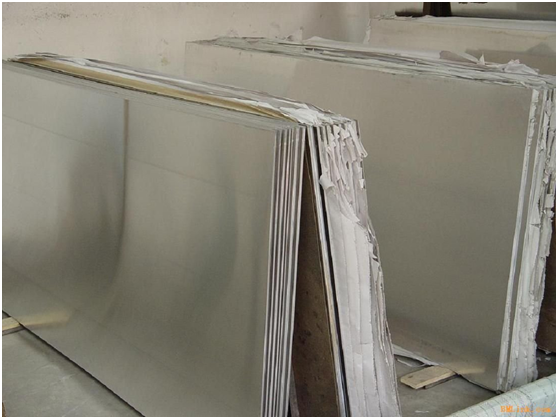

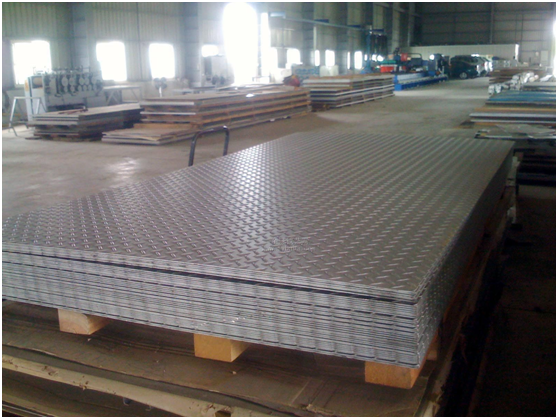
Cold Rolled and Hot Rolled:
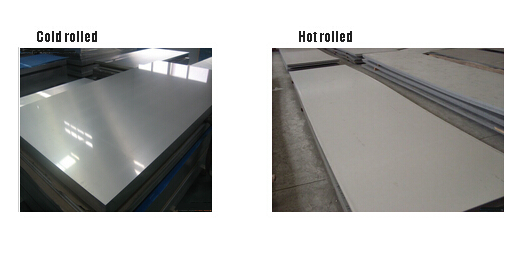
Packaging & Shipping
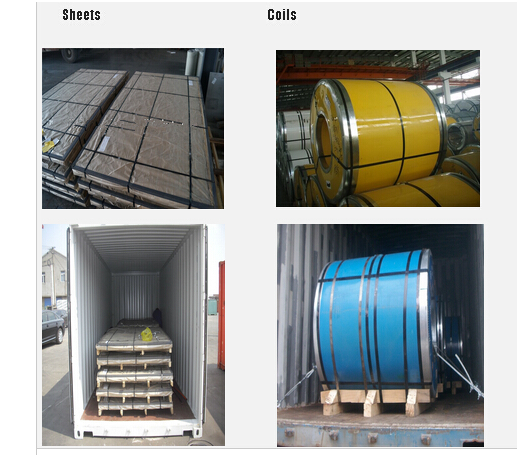
Our Services
Our company has cooperative relation between the domestic agents. Stainless steel sheet can be made accordingto the customers requirements. Fasten delivery. Quality assured.
Company Information
CNBM(China National Building Material Company)International Corporation is a state owned Enterprise.
We are listed in the fortune global 500 companies, and we are the second largest building material company in the world.
We are specialized in producing stainless steel coil, stainless steel (plate/sheet), and duplex stainless steel for a prelonged period. We are currently doing grade of steel of 201/202,304/304L, 310S/309S/316L/316Ti/321,410/420/430/444/443/409L, and 904L.

FAQ
1. How Many years experience do we have?
We have been exported to more than 20 countries in the past 15 years.
2. How long do we usually reply your request?
We always reply our customer within 24 hours.
3. What material are we supplying now?
We are specialized in producing Stainless Steel Coil, Stainless steel(plate/sheet), and duplex stainless steel for 2 decades. We are currently supplying 201/202, 304/304l, 310S/309S/316l/316Ti/321, 410/420/430/444/443/409l, and 904l.
If you have any question about stainless steel sheets,donot forget to sending the email to Us! You will get the competitive Price and have a very good experience about the Buying Process! CNBM International Corporation is always your trustful friend!
- Q: What is the weight of a stainless steel sheet?
- The weight of a stainless steel sheet may differ based on its dimensions and thickness. Stainless steel possesses a density of approximately 8 grams per cubic centimeter. Thus, in order to compute the weight of a sheet, it is necessary to possess knowledge of its length, width, and thickness. By multiplying these dimensions together and subsequently multiplying by the density, the weight of the stainless steel sheet can be determined. For instance, a stainless steel sheet measuring 4 feet by 8 feet and with a 1/8 inch thickness would weigh approximately 56 pounds. It is crucial to acknowledge that these calculations are only approximations and may slightly fluctuate based on the precise composition and grade of the stainless steel.
- Q: How to calculate the weight of stainless steel plate?
- The formula can be calculated according to the weight of stainless steel: area m2*, thickness mm*, density = kg / sheet to calculate the weight that the stainless steel can bear.Stainless steel plate has a smooth surface, high plasticity, toughness and mechanical strength, corrosion of acid, alkaline gas, solution and other medium
- Q: Are stainless steel sheets suitable for marine applications?
- Yes, stainless steel sheets are highly suitable for marine applications. They possess excellent corrosion resistance properties and can withstand the harsh conditions of saltwater environments, making them ideal for use in marine applications such as boat fittings, offshore structures, and shipbuilding.
- Q: How do I calculate the strength of stainless steel sheets?
- To determine the strength of stainless steel sheets, various factors need to be taken into account, including tensile strength, yield strength, and elongation. Tensile strength refers to the maximum stress a material can handle before breaking and is typically measured in psi or MPa. To ascertain the tensile strength of stainless steel sheets, one can refer to the manufacturer's specification sheet or consult engineering handbooks. Yield strength, on the other hand, denotes the stress at which a material permanently deforms. It is a crucial consideration in structure design and material selection. The yield strength of stainless steel sheets can be found in the manufacturer's specification sheet or engineering references. Elongation, expressed as a percentage, indicates the extent to which a material can stretch or deform before breaking. Higher elongation values signify greater ductility. The elongation of stainless steel sheets can be determined through tensile testing or obtained from material specifications. These three parameters, namely tensile strength, yield strength, and elongation, offer valuable insights into the overall strength and performance of stainless steel sheets. It is imperative to consider these factors when assessing the suitability of stainless steel sheets for specific applications or designing structures that require a particular strength level.
- Q: Can stainless steel sheets be used for railway infrastructure?
- Railway infrastructure can utilize stainless steel sheets, as they offer numerous advantages. Stainless steel is a versatile and enduring material that is well-suited for railway applications. Its resistance to corrosion makes it suitable for outdoor and high humidity environments, which are commonplace in railway infrastructure. Stainless steel sheets can withstand severe weather conditions, such as extreme temperatures, rain, and UV radiation, without deteriorating or corroding. As a result, they are an excellent choice for railway tracks, bridges, tunnels, and other structures that are exposed to the elements. Moreover, stainless steel sheets possess an exceptional strength-to-weight ratio. This characteristic allows for the construction of lightweight yet robust railway infrastructure. Consequently, the overall structure's load is reduced, enabling easier transportation and installation. Stainless steel is also fire-resistant and can withstand significant impact, making it an ideal option for railway applications that prioritize safety. Furthermore, stainless steel sheets are effortless to clean and maintain, which is advantageous for railway infrastructure that necessitates regular upkeep. Their aesthetic appeal can be easily restored through polishing, ensuring a clean appearance. Additionally, stainless steel is recyclable, making it an environmentally friendly choice for sustainable railway construction. To summarize, due to their corrosion resistance, strength, durability, fire resistance, ease of maintenance, and sustainability, stainless steel sheets are indeed suitable for railway infrastructure.
- Q: How do I prevent intergranular corrosion on stainless steel sheets?
- To prevent intergranular corrosion on stainless steel sheets, there are several measures you can take: 1. Choose the right stainless steel grade: Use stainless steel grades that are specifically resistant to intergranular corrosion, such as 304L, 316L, or 321. These grades have lower carbon content, which helps in minimizing the formation of chromium carbides at grain boundaries. 2. Heat treatment: After fabrication or welding, subject the stainless steel sheets to a solution annealing or post-weld heat treatment process. This heat treatment eliminates the chromium carbides that may have formed during welding or high-temperature processing, preventing intergranular corrosion. 3. Avoid exposure to high temperatures: Stainless steel sheets should not be exposed to temperatures between 450 to 850 degrees Celsius (842 to 1562 degrees Fahrenheit) for extended periods. If exposed, chromium carbides may form at the grain boundaries, making the stainless steel susceptible to intergranular corrosion. 4. Use proper welding techniques: When welding stainless steel sheets, use low heat input and minimize the time the material is exposed to high temperatures. This helps in reducing the formation of chromium carbides and preserves the corrosion resistance of the stainless steel. 5. Pickling and passivation: After fabrication or welding, ensure that the stainless steel sheets are properly pickled and passivated. Pickling removes any contaminants on the surface, while passivation forms a protective oxide layer that prevents intergranular corrosion. 6. Regular maintenance and cleaning: Keep the stainless steel sheets clean and free from contaminants that could potentially cause corrosion. Regularly clean the surfaces with mild detergents and avoid using harsh chemicals or abrasive materials that may damage the protective oxide layer. By following these preventative measures, you can significantly reduce the risk of intergranular corrosion on stainless steel sheets and maintain their corrosion resistance properties for a longer lifespan.
- Q: What are the benefits of using diamond plate stainless steel sheets?
- Using diamond plate stainless steel sheets offers numerous advantages. Firstly, these sheets are highly durable and resistant to corrosion. Stainless steel is well-known for its strength and ability to withstand harsh environments, making it an ideal option for various uses. The diamond plate pattern further enhances the sheets' durability, providing additional strength and traction. Secondly, diamond plate stainless steel sheets possess a distinctive aesthetic appeal. The diamond pattern not only adds a visually pleasing texture but also helps conceal scratches and dents, resulting in cleaner and more pristine sheets. Consequently, they are a popular choice for architectural and decorative purposes. Moreover, diamond plate stainless steel sheets are effortless to clean and maintain. The smooth stainless steel surface allows for easy cleaning, while the diamond pattern reduces the visibility of dirt and grime. This makes them suitable for environments requiring frequent cleaning, such as commercial kitchens or industrial facilities. Furthermore, these sheets offer exceptional slip resistance. The raised diamond pattern provides traction, minimizing the risk of slips and falls. Consequently, they are particularly valuable in areas prioritizing safety, such as ramps, stairs, or walkways. Overall, diamond plate stainless steel sheets provide durability, corrosion resistance, aesthetic appeal, easy maintenance, and slip resistance. These qualities make them a versatile option for a wide range of applications, including industrial settings and architectural designs.
- Q: Are stainless steel sheets suitable for medical equipment or devices?
- Yes, stainless steel sheets are commonly used in the manufacturing of medical equipment or devices due to their excellent corrosion resistance, durability, ease of cleaning, and ability to withstand sterilization processes.
- Q: Can stainless steel sheets be used for architectural wire mesh?
- Architectural wire mesh can indeed be made from stainless steel sheets. This material is highly versatile and widely used in architecture because of its durability, attractive appearance, and resistance to corrosion. By transforming stainless steel into sheets, it becomes easily manipulable and can be woven into wire mesh panels suitable for various architectural purposes, including building facades, interior partitions, sunscreens, and balustrades. The use of stainless steel sheets for architectural wire mesh allows for the creation of intricate and visually appealing designs, while also providing strength, stability, and longevity to the structure. Furthermore, customization options are available for stainless steel wire mesh, including mesh size, wire diameter, and finish, ensuring that it meets the specific requirements of each architectural project.
- Q: How do I bend or form stainless steel sheets?
- To bend or form stainless steel sheets, you can follow these steps: 1. Choose the appropriate stainless steel grade: Stainless steel comes in various grades, each with specific properties. Select the grade that best suits your project's requirements, considering factors like corrosion resistance, strength, and formability. 2. Use the right tools: To bend stainless steel sheets, you will need specific tools such as a hydraulic press brake or a metal bending machine. These tools apply force evenly to achieve precise and consistent bends. Make sure to use tools that are designed for stainless steel to avoid damaging the material. 3. Prepare the stainless steel sheet: Before bending, ensure that the stainless steel sheet is clean and free from any dirt or debris. Additionally, mark the desired bending lines on the sheet using a pencil or tape to guide you during the process. 4. Determine the bending angle and radius: Determine the angle and radius of the bend you want to achieve. This will depend on the specific requirements of your project. Use a protractor or a template to measure and mark the desired angles accurately. 5. Secure the stainless steel sheet: To prevent movement or slipping during the bending process, securely clamp the stainless steel sheet to the bending tool or machine. This will ensure stability and accuracy during the bending process. 6. Apply pressure gradually: Start the bending process slowly and gradually increase the pressure. This prevents the stainless steel sheet from cracking or warping. Monitor the bending carefully to ensure that the desired shape is achieved without any defects or deformation. 7. Repeat if necessary: If you need to create multiple bends or complex shapes, repeat the process as required. Ensure that each bend is carefully measured and aligned with the previous bends to achieve a consistent and accurate result. 8. Finishing touches: After bending the stainless steel sheet, remove any residual marks or burrs using a file or sandpaper. This will give your finished product a smooth and polished appearance. Remember, bending stainless steel sheets can be challenging, especially for thicker gauges or harder grades. It is advisable to practice on scrap pieces or seek professional assistance if you are unsure or lack experience in working with stainless steel.
Send your message to us
Stainless Steel Plate 304 with Surface Treatment
- Loading Port:
- Shanghai
- Payment Terms:
- TT OR LC
- Min Order Qty:
- 1000 m.t.
- Supply Capability:
- 5000000 m.t./month
OKorder Service Pledge
OKorder Financial Service
Similar products
Hot products
Hot Searches
Related keywords
